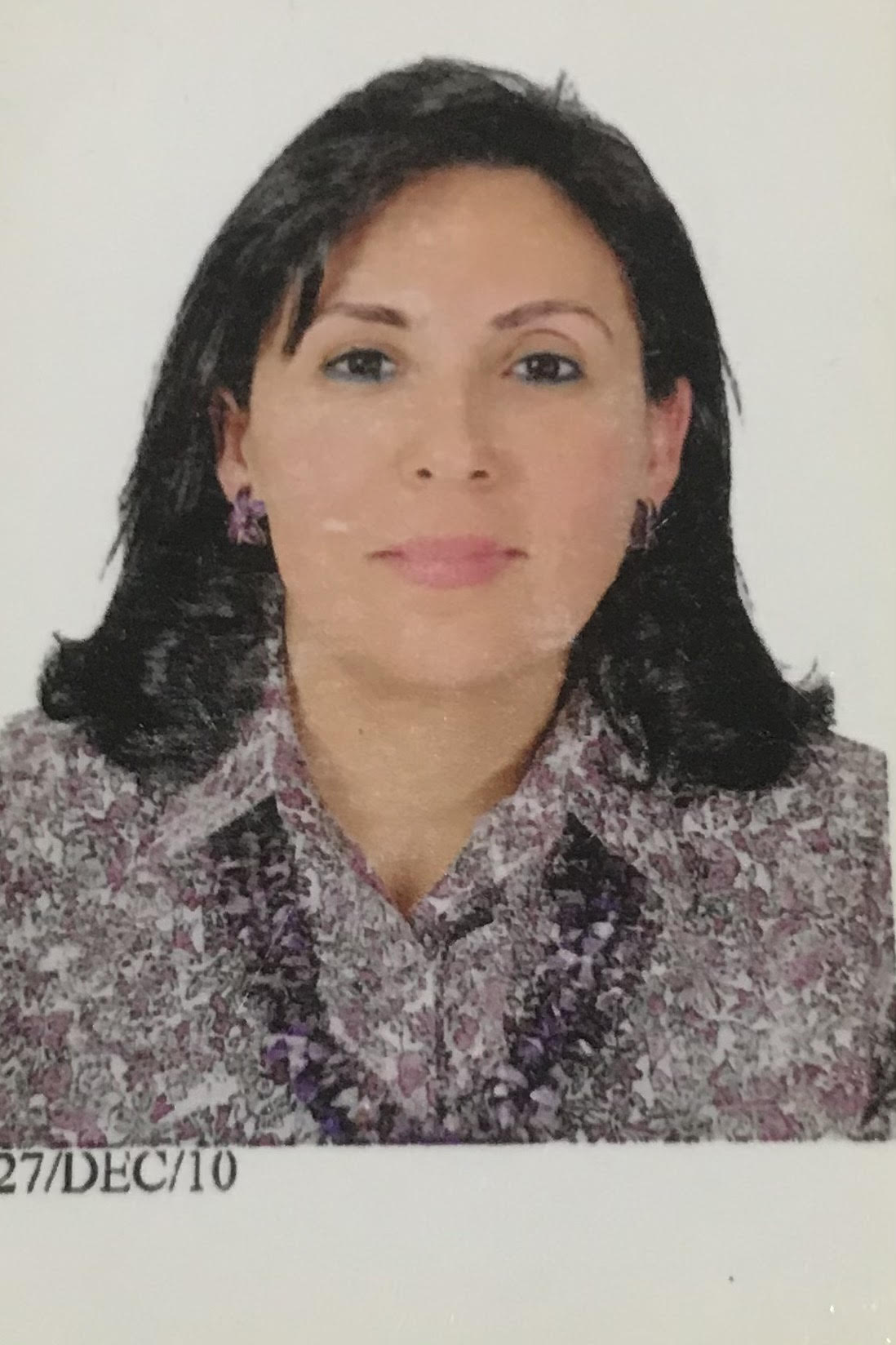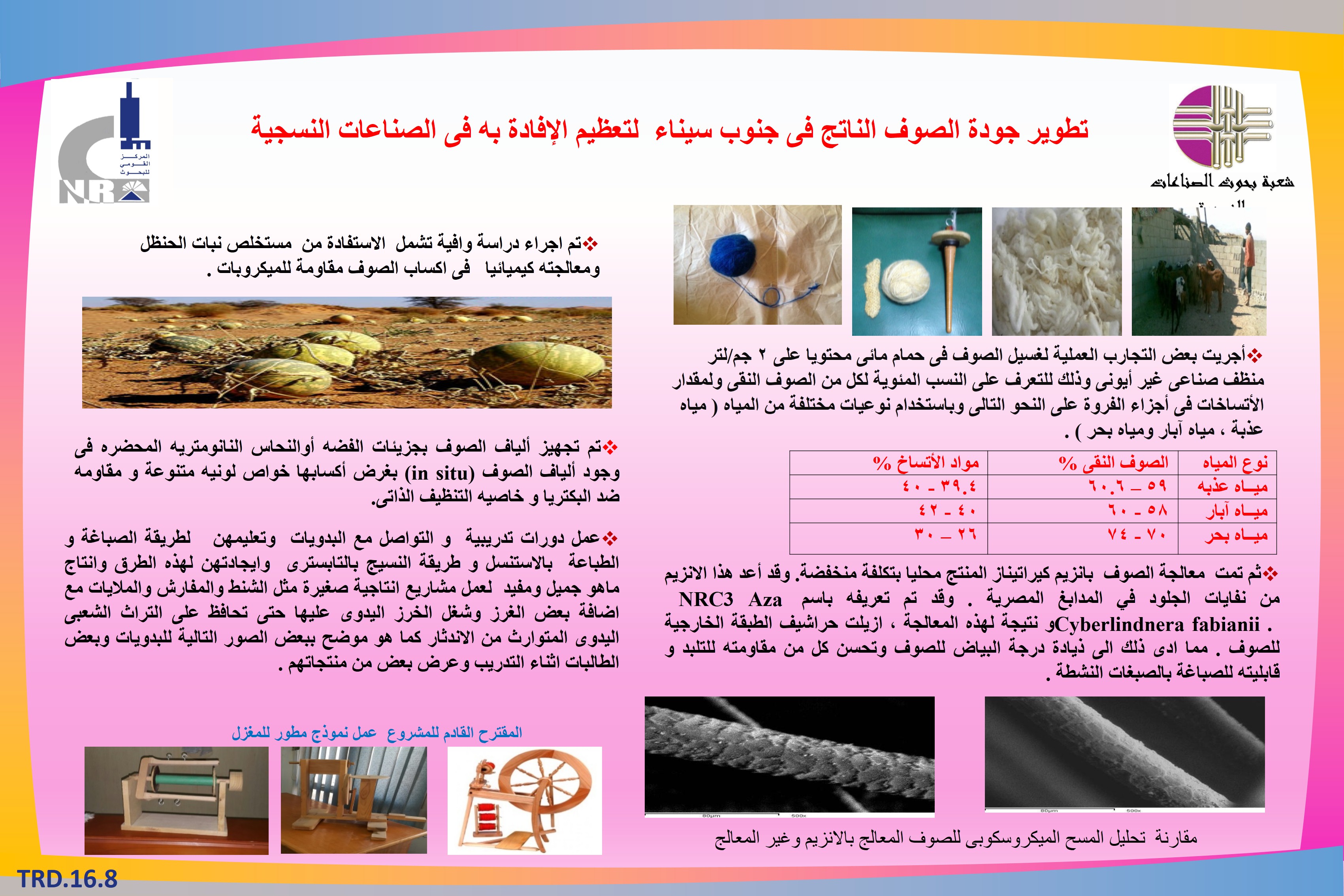- The poster summarizes what has been accomplished in a project that aims to develop the quality of local wool in Sinai (lightning wool) and camel and goat hair to maximize benefit from them as one of the outputs of livestock in Sinai, and then investment opportunities with techno/economic, environmental and social returns can be created. By using these raw materials in the manufacture of carpets, kilims, covers, and some local furnishings and textiles.
And finding an economical and environmentally safe way to improve the physical and chemical properties of coarse wool fibers such as flocculation, dyeing process, and the degree of whiteness and yellowing.
Among these achievements:
- Utilizing sea water and well water to save water as an initial step in the process of washing wool and removing a large percentage of its dirt
By 26-30%. Then get rid of most of the dirt stuck to the raw wool after washing it with well water compared to fresh water which reaches 39.4 - 4%, which leads to saving the water consumed in the wool washing process.
- Wool was treated with keratinase enzyme isolated locally from leather waste available in Egyptian tanneries and examined by laboratories of an international company and identified as: Cyberlindnera fabianii NRC3 aza) to remove the scales of the outer layer of wool that appeared clearly by scanning electron microscopic examination. This led to an increase in the whiteness of the wool and an improvement in its resistance to flocculation, susceptibility to dyeing with active dyes, and good washing stability compared to untreated and undyed protein fabrics.
Also, nanometric silver particles were prepared at a concentration of 100 parts per million, fixed using bitter melon extract, and applied to wool fabrics to improve their anti-bacterial properties, resistance to ultraviolet rays, self-cleaning properties, and various other properties.
Training courses were also conducted, communicating with Bedouin women, and teaching them simplified methods of dyeing and printing using stencils and the method of weaving using tapestry their mastery of these methods and the production of what is beautiful and useful for making small productive projects such as bags, bedspreads, and sheets with the addition of some stitches and hand-beadwork on them to preserve the inherited folk heritage As shown in some of the pictures in the poster




